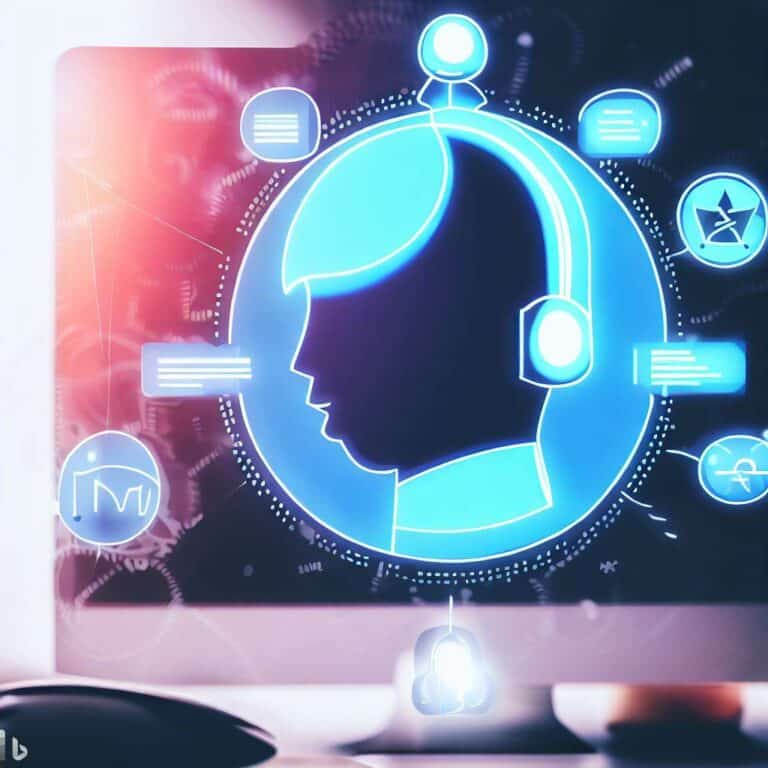Boosting Customer Retention with SaaS Onboarding
SaaS onboarding can often seem like a daunting challenge, especially when you’re trying to create an experience that not only educates but also engages your users.
Many misconceptions exist regarding the SaaS onboarding process. One of them being “You need years of expertise to design an effective SaaS onboarding strategy”. This is far from the truth.
In fact, companies both big and small have been able to master their user journey by focusing on key elements such as personalization and customer support during the initial stages of use.
SaaS technology has revolutionized the way businesses can manage their operations, making it easier and more efficient than ever before. A crucial part
Table of Contents:
- The Art and Science of SaaS Onboarding
- Personalizing Your SaaS Onboarding Experience
- Mastering Effective SaaS Onboarding Practices
- The Role of Customer Support in User Onboarding
- Optimizing Your Onboard Flow
- The Importance of Feedback in SaaS Onboarding Process
- FAQs in Relation to Saas Onboarding
- Conclusion
The Art and Science of SaaS Onboarding
It’s time to explore the often overlooked, yet crucial aspect in a Software as a Service (SaaS) business – SaaS onboarding. This isn’t just about guiding someone through your software product; it’s an art that requires understanding customer behavior and tailoring experiences accordingly.
But let’s not forget, it is also a science.
Data analysis plays an integral role here. It aids in continuously refining the process for better user experience and satisfaction.
A Look into Why SaaS Onboarding Matters
An effective SaaS onboarding strategy has two main benefits: improving retention rates and creating product advocates. Read more about these advantages.
In turn, this reduces churn rate – which can significantly impact profitability considering how vital customer lifetime value is in the SaaS industry.
In addition to retaining users.
Diving Deeper Into User Onboarding Elements
Product tours are one key element within user onboarding – essentially guided walkthroughs that familiarize new users quickly so they can start reaping benefits from day one.
Additionally, tasks like setting up profiles or configuring settings according to specific requirements play their part too during this phase.
Educating Users During The Process:
An essential component of successful SaaS customer education involves teaching them why each feature matters for their unique circumstances or goals.
Understanding what goes into making impactful first impressions via excellent SaaS design sets you up nicely for our next topic: personalizing the journey to further enhance satisfaction levels among different types of audiences.
Personalizing Your SaaS Onboarding Experience
The essence of a successful onboarding process lies in personalization. By customizing the experience to meet individual user needs, you can foster customer satisfaction from day one.
Diving into Tools for Enhanced Onboarding
Incorporating tools such as Appcues allows for an interactive product tour that enhances your SaaS onboarding process. This tool enables segmentation of users based on their behavior or profile information, thus providing them with personalized content tailored specifically to their needs.
This not only enriches the overall user experience but also encourages customers’ engagement with your software. With Appcues, guiding users through key features at their own pace is possible – giving them time and flexibility to familiarize themselves with its functionalities.
Create Content That Resonates With Users
Crafting content geared towards different segments of your audience is another crucial aspect in enhancing user experiences during onboarding. The concept here is simple: if content resonates well because it addresses specific pain points or goals they have – chances are high they will engage deeply and consistently with your platform.
To achieve this level of effective personalization requires a deep understanding of who exactly makes up each segment within your target audience along various dimensions like job roles, industries served by them, etc. So make sure thorough research forms an integral part of the planning stage itself before moving onto the actual execution phase where content gets created accordingly based upon insights gathered in earlier stages of the process.
As we transition into mastering effective SaaS onboard practices in the next section, remember: the ultimate goal isn’t merely getting someone to sign up initially but ensuring they stay engaged throughout the entire journey, thereby converting them into loyal advocates for your brand over the long term.
Key Takeaway: Personalizing your SaaS onboarding process, using tools like Appcues for interactive product tours and crafting resonating content can significantly boost customer satisfaction. Remember, the end game isn’t just initial sign-ups but nurturing long-term brand advocates.
Mastering Effective SaaS Onboarding Practices
For SaaS businesses, onboarding is an essential factor for success; this includes optimizing account setup and sign-up processes to reduce churn rate. This involves creating smooth account setup procedures and sign-up processes while implementing strategies that minimize churn rate.
The Art Of Streamlining Account Setup
In any successful SaaS operation, user experience starts with simple yet effective account setup. It’s crucial for users to easily navigate through this initial stage without encountering unnecessary complexities or confusion.
An ideal strategy would include providing clear instructions at each step in plain language that even non-tech savvy customers can comprehend. A quick-start guide could also prove beneficial by allowing users to familiarize themselves with your software’s interface before delving into more complex features.
Simplifying The Sign-Up Process
A well-designed sign-up procedure should be characterized by simplicity and efficiency. Lengthy forms demanding excessive information may discourage potential customers from completing their registration, whereas concise forms requesting only essential details encourage completion while still collecting necessary data for future personalization efforts within the customer journey.
Tackling Churn Rate Through User Engagement
User engagement is critical when it comes to reducing churn rates among SaaS subscribers. Regular interaction between your platform and its users helps maintain high interest levels, thus preventing them from seeking alternatives elsewhere.
Successful SaaS companies have managed to perfect their user experiences via the implementation of effective onboarding practices.
As we transition towards our next topic, “The Role of Customer Support In User Onboarding,” let us understand how robust customer support during early interactions significantly enhances overall client satisfaction.
The Role of Customer Support in User Onboarding
When users are getting started with your software, the customer support you provide during account setup can make or break their onboarding experience. A solid onboard team is essential to guide new customers through these first-time experiences and ensure they get off to a smooth start.
Dedicated Onboard Teams: Your Secret Weapon
A dedicated onboard team doesn’t just handle issues—it sets the tone for future interactions between your brand and its customers. It sends a strong signal that you are devoted to giving remarkable service from the start. HubSpot highlights how excellent customer service boosts trust among clients.
This hands-on approach not only helps navigate potential bumps but also builds loyalty amongst clientele by showing them they matter right from their initial interaction with your product.
Leveraging Technology For Better Support
Optimizing Your Onboard Flow
The journey to an effective onboard flow begins with optimization. This process is pivotal in enhancing the user experience, and it heavily relies on visual cues such as progress bars that guide users through their SaaS adoption journey.
Navigating Through Visual Cues: Progress Bars
A well-executed progress bar can drastically enhance your user’s onboarding experience. It serves as a roadmap of sorts, indicating where they currently stand within the process and what steps are yet to be taken – reducing any potential confusion or uncertainty along the way.
This sense of clarity not only keeps users engaged but also motivates them towards completion of the entire sequence – thereby minimizing instances of premature drop-offs during this critical phase.
Employing A/B Testing for Optimal User Experience
To take your onboard flow up another notch, consider employing A/B testing strategies into your approach. By creating two versions of your onboarding sequence with minor variations – different instructions or altered visuals perhaps – you’re able to compare their effectiveness based on data gathered from user engagement rates and completion percentages.
This method allows you to make informed decisions about how best to structure these initial experiences upon entering onto our platform; thus continually refining overall design for maximum impact over time. Learn more about implementing successful A/B tests here.
Sustaining User Engagement Throughout The Process
Maintaining high levels of engagement throughout every stage is crucial when optimizing one’s onboard flow. Each element should contribute towards keeping individuals interested and progressing further into using the software.
To achieve this objective, focus must be placed not just on making tasks intuitive, but also on ensuring they provide value at every turn, from account setup right until full product adoption. By doing so, businesses have a better chance of retaining customers beyond the sign-up stages and simultaneously fostering stronger relationships in the long term. More information on maintaining high levels can be found here.
Rev up your SaaS onboarding with a well-oiled mix of visual cues, A/B testing, and sustained engagement. Remember, it’s not just about making tasks intuitive but also valuable – that’s the secret sauce to retaining customers beyond sign-up stages.
The Importance of Feedback in SaaS Onboarding Process
Understanding the significance of customer feedback in refining your SaaS onboarding process is crucial. It offers invaluable insights into areas where users encounter difficulties, enabling you to make necessary enhancements.
Drawing Lessons from Case Studies and Success Stories
Gaining knowledge from case studies and success stories can shed light on what works effectively within an onboard sequence. These instances provide tangible evidence of successful strategies, helping you tailor your approach to better meet user needs.
Moreover, these success narratives act as endorsements for your product’s effectiveness. They show how others have reaped benefits from using your software, which can instill confidence in potential customers and motivate them towards completing the onboarding process.
User Feedback: A Crucial Element
A key aspect that enhances the SaaS onboarding procedure is user feedback. By actively seeking opinions directly from users themselves, you can gain firsthand information about any struggles or dissatisfaction they might be experiencing during their journey with our service. This not only aids us in identifying pain points but also allows prompt improvements wherever required.
Tuning Your Approach Based on Received Insights
An important step after receiving this valuable input involves knowing how best to utilize it for refinement purposes. “If we fail to plan based on received data, then we are planning to fail,” said Benjamin Franklin famously. Spotting patterns or recurring issues highlighted by multiple clients should take precedence since these indicate common problems faced by a majority.
This analysis enables businesses like ours to refine their processes more accurately based on actual experiences rather than assumptions—resulting in increased satisfaction rates among new sign-ups while reducing churn rate over time. How To Boost Satisfaction Rates With Effective Onboarding
Remember—the importance of feedback cannot be overstated when it comes to shaping successful SaaS companies.
Effective SaaS onboarding hinges on customer feedback and learning from case studies. These insights highlight user struggles, allowing for prompt improvements, boosting satisfaction rates, and reducing churn. Remember – when shaping successful SaaS companies, the value of feedback is immeasurable.
FAQs in Relation to Saas Onboarding
What is onboarding in SaaS?
SaaS onboarding is the process of guiding new users through your software, helping them understand its features and how to use it effectively.
What are the stages of SaaS onboarding?
The stages include account setup, product tour or walkthrough, user training, ongoing support, and periodic check-ins for feedback.
How do I create a SaaS onboarding process?
Create an effective SaaS onboarding by understanding customer needs, personalizing their experience, providing clear instructions and support throughout their journey with your software.
How long is the average onboarding for SaaS?
The duration varies depending upon complexity but typically ranges from a few days to several weeks. The goal should be efficiency rather than speed.
Conclusion
Mastering the art and science of SaaS onboarding is no small feat. It’s a journey that begins with understanding its importance in boosting customer retention.
Personalizing your user experience can make all the difference. Tools like Appcues are there to help, guiding users through key features of your software.
The secret sauce? A blend of effective practices, robust customer support, and constant optimization of onboard flow. All these contribute to reducing churn rate and enhancing product adoption rates.
Gathering feedback plays a crucial role too! It helps you refine processes and identify areas where customers struggle most.
Inspiration abounds from successful SaaS companies who’ve perfected their user experiences through stellar onboarding flows – they’re worth learning from!
If you’re eager to innovate your business with software solutions that boost leads, or simply want more tips on mastering SaaS onboarding – look no further.
My blog at [insert blog URL], born out of 35 years’ experience in customer service innovation, will be just what you need!



